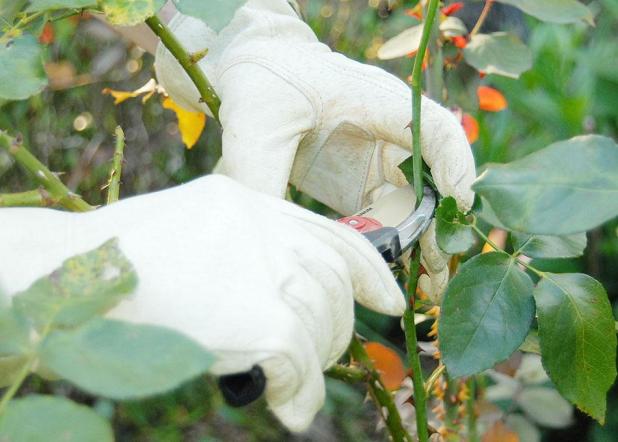
Consider carefully before pruning during droughts.
—LSU AgCenter file photo
Get It Growing: Nurture the late summer garden
As we ride out this last stretch of summer, it’s time to start looking forward to fall gardening weather. There are some tasks to be handled this month. Here is a list of what to do in the garden and landscape this month and into September.
Watering: Help struggling plants survive drought stress by watering them early in the morning or late in the evening when temperatures are cooler. This reduces water loss due to evaporation and allows the plants to absorb water more effectively. Be sure to water deeply at the base of the plant. This encourages plants to develop deep root systems, making them more resilient to drought.
Use drip irrigation or soaker hoses to deliver water directly to the soil at the base of the plants. This minimizes evaporation and helps prevent wetting the foliage, which can lead to fungal diseases. Establish a watering schedule to keep track during extended drought periods. Lastly, avoid fertilizing during periods of drought and heat stress, as this can increase water demand and stress the plants even further.
Rose care: This is the time of year we typically recommend trimming ever-blooming roses by a third for new blooms in October and November. Pruning plants during a drought requires a more cautious approach. Pruning can have both positive and negative effects on plants during drought conditions, so it’s important to assess the situation carefully.
Pruning during drought can help reduce the water demand of the plant by decreasing the overall foliage and transpiration rate. Removing dead, damaged and nonessential growth allows the plant to allocate its limited resources more efficiently to the parts that matter most for its survival.
But pruning during a drought period can also exacerbate the stress plants are experiencing due to water scarcity. Pruning can temporarily slow down growth and recovery.
Some guidelines for pruning during drought conditions are to limit pruning to essential tasks such as removing dead, diseased and damaged canes.
Avoid heavy pruning or shaping cuts that can lead to significant water loss through wounds. If you decide to prune, do so early in the morning or late in the evening when temperatures are cooler to minimize stress on the plant.
Keep a close eye on the pruned plants and be sure to water them appropriately. Newly pruned plants may require extra attention and care to recover.
After removing canes from your roses, disinfect pruners to prevent disease spread. When removing diseased material, rinse your pruners in a 10% bleach solution and then in water before making any new cuts. This will help prevent the transfer of disease to other parts of the plant or other plants in the garden.
Do not prune once-blooming roses, as you may reduce the blooms for next year. You may remove any dead or diseased canes, however. Hold off fertilizing until temperatures and rain become more consistent.
Fungal disease prevention: Spray roses for blackspot and powdery mildew using appropriate fungicides. You may choose to use triforine, thiophanate methyl or copper oleate. Follow manufacturer’s directions carefully. Rake up and remove all fallen leaves to prevent further infection of rose bushes and dispose of them in the trash. Do not compost infected plant material.
Bed maintenance: Trim and stake tall plants and deadhead annuals, perennials and vines. Remove tired plants and think about replacements for cooler weather. Start selecting cool-season annuals and perennials for the landscape. This is also a great time to start thinking about what trees and shrubs to plant in the fall.
Lawn care: Watch for chinch bug damage, treating with insecticides if necessary. Fire ants are a problem on the lawn as well. Treat with granular baits if needed.
Transplanting and vegetables: We are not quite there with all of this heat, but the cooler daytime temperatures we’ve had this week are getting me excited for my fall vegetable garden. You can transfer fall tomato plants.
Be sure to monitor for pests and diseases. You’ll be able to replace spent summer crops with broccoli, cabbage, kale and more in the upcoming months. Consider keeping productive spring plants like eggplants and peppers.
Complete these tasks to ensure your garden thrives into the fall and remains resilient against drought and heat and the threat of hurricanes.
